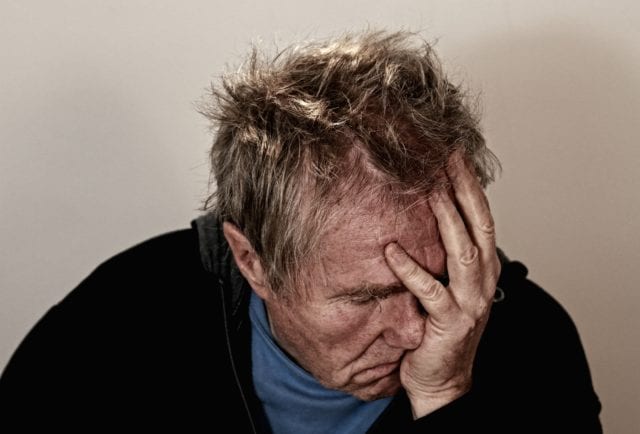What is Diogenes Syndrome?
Researchers have long sought to understand the complexities of compulsive hoarding. The compulsion to hoard clothes, trash, and trinkets piled as high as the eye can see is intriguing—so much so that producers have created a reality television show about it. Hoarding unnecessary objects is a phenomenon related to a rare condition called Diogenes syndrome. Continue reading to learn more about Diogenes syndrome and how it relates to hoarding.
What is Diogenes Syndrome?
Diogenes syndrome, nicknamed senile squalor syndrome, is a neuropsychiatric disorder characterized by self-neglect, domestic squalor, mood changes, social ineptitude, compulsions such as hoarding, and catatonia. The majority of patients diagnosed with Diogenes syndrome are elderly adults at risk for emotional collapse. They withdraw completely from society, failing to engage in relationships and day-to-day life activities.
Some of the main features of Diogenes syndrome is poor personal hygiene and living in a filthy home. Living in an unsanitary environment has negative health repercussions. For example, many develop pneumonia from exposure to pollutants in their home and are prone to falls from excessive trash buildup.
How is Diogenes Syndrome Different Than Hoarding
Compulsive hoarding is generally accompanied by emotional distress. Those who hoard objects, trash, and other miscellaneous objects suffer from depression and anxiety. They often recognize their abnormal behavior and feel upset about how their compulsions impact their friends, family, and living conditions. Those with Diogenes syndrome, however, do not experience remorse or emotional distress over their compulsive hoarding. Their behavior occurs along with other symptoms such as self-neglect, apathy, social problems, and even abnormal movements. Additionally, compulsive hoarding is seen in all ages, whereas Diogenes syndrome is mainly diagnosed in older adults.
Types of Diogenes Syndrome
There are two types of Diogenes syndrome. Primary Diogenes syndrome is a lone diagnosis. It does not occur with a comorbid mental illness. Up to 50 percent of cases are considered primary Diogenes syndrome. Contrarily, a mental illness diagnosis accompanies Diogenes syndrome in the secondary form of the disorder.
Signs and Symptoms of Diogenes Syndrome
Diogenes syndrome consists of psychological, physical, and environmental signs and symptoms. Although rare, Diogenes syndrome vastly effects the mind and body.
Psychological Signs and Symptoms
- Compulsive hoarding—Patients may exhibit the hoarding of both objects, trash, and animals. Many have an overabundance of pets that goo neglected.
- Recluse-like—The withdrawal of society and daily activities makes those with Diogenes syndrome seem recluse like. They avoid leaving home and seclude themselves from friends, family, and work.
- Apathy—Despite living in such a way that would evoke shame, people with Diogenes syndrome show an apathetic indifference. They are not embarrassed, nor do they express concern or enthusiasm.
- Mental disorders— Diogenes syndrome is related to co-occuring mental disorders. Obsessive compulsive disorder (OCD) is the most common, especially with compulsive hoarders. Personality disorders are also prevalent in the Diogenes syndrome patient population.
Physical Signs and Symptoms
- Poor hygiene—Poor personal hygiene is in the top three symptoms of Diogenes syndrome. Self-care such as bathing and dental cleaning are neglected.
- Disheveled appearance—In addition to a lack of self-care, those with Diogenes syndrome appear unkempt. Matted hair, overgrown nails, dirty clothes, and clothes that do not fit are all signs of the disorder.
- Body odor—As part of poor hygiene, patients with Diogenes may exude unpleasant body odor from not bathing for periods of time.
- Malnutrition and dehydration—Self-neglect does not stop at physical appearance. Unfortunately, many with Diogenes syndrome do not consume food or drink fluids as they should. This leads to malnutrition and dehydration.
- Skin rashes—Skin rashes stem from a lack of bathing as sweat and germs buildup on the body.
- Injuries—When hoarding is significant and house upkeep is not a priority, falls and other injuries are more likely.
- Frequent pneumonia—Waste, trash, and excessive hoarding allows pollutants to build up in the air causing pneumonia.
Environmental Signs and Symptoms
Environmental symptoms of Diogenes syndrome are connected to domestic squalor. Nearly all patients with the condition live in filthy, unsanitary surroundings. Some notice an unpleasant smell due to the accumulation of trash, neglected animals, and the unnecessary hoarding of objects. Infestations of rats and unwanted insects invade their environment.
Causes of Diogenes Syndrome
The cause of Diogenes syndrome remains unknown. Evidence suggests Diogenes syndrome is caused by frontal lobe impairment because it shares symptoms with frontal lobe dementia. This is why the condition is treated as dementia. Researchers also believe Diogenes syndrome is a reaction to stress. Many patients report symptom onset after a traumatic event like the sudden loss of a spouse, child, or caregiver.
Risk Factors of Diogenes Syndrome
Although the cause of Diogenes syndrome is currently unknown, there are risk factors for the disease. According to Adult Protective Services, the number one risk factor is age. Diogenes syndrome tends to occur in the elderly—specifically every 5 per 10,000 patients over 60 years of age. Socioeconomic status is irrelevant to the diagnosis. Most patients are above average in intelligence and possess supportive family backgrounds prior to symptom onset. Facing a sudden loss or medical conditions such as a history of mental illness, a stroke, heart disease, dementia, or arthritis increase the risk of developing Diogenes syndrome.

Mental Illness Co-occurring In Diogenes Syndrome
A significant portion of patients with Diogenes syndrome have a comorbid mental illness diagnosis. The intense personality and changes align with paranoid and schizoid personality disorders, as well as bipolar disorder. In addition, these patients can seem out of touch with reality. These episodes are sometimes diagnosed as schizophrenia. The anxiety disorder, obsessive-compulsive disorder (OCD), is also fitting for the patients that display compulsions through hoarding. Studies indicate that depression and addiction precede the onset of Diogenes syndrome. It is important professionals differentiate whether a patient has Diogenes syndrome and a mental illness or if the mental illness is an incorrect diagnosis and the symptoms are only mistaken for a psychopathology. Researchers explain that true mental illness does not progress, whereas Diogenes syndrome progressively worsens over time (Irvine, 2014).
Diagnosing Diogenes Syndrome
Specialists suspecting Diogenes syndrome evaluate patients through a set of criteria. The disorder does not have criteria outlined in the DSM-5. Alternatively, physicians look for the signs of symptoms in absence of another obvious cause. For example, they first evaluate the patient on age and medical history. If the patient is elderly and has a history of frontal lobe damage, the diagnosis of Diogenes syndrome is more likely. The frontal lobe is responsible for cognitive processes that are abnormal in the condition. This includes reasoning, decision making, and social behavior. Because catatonia is a symptom in some patients with Diogenes syndrome, a neurologist may test for atypical movements. Scans of the brain are helpful to determine causes that may be treatable such as tumors or forms of dementia.
Treatment for Diogenes Syndrome
Without intervention, Diogenes syndrome has high mortality rate. Up to 46 percent of people with Diogenes syndrome die prematurely. While there is no cure, the treating Diogenes syndrome is determined by the patient’s current state of health. On many occasions, hospitalization is required to treat the physical complications of neglect—infections, pneumonia, injuries, and malnutrition. However, patients easily relapse when they return to their home environment.
Therapy for Diogenes Syndrome
Someone with Diogenes syndrome requires extensive therapy to treat the condition. To maintain progress, social support is imperative. Experts advise patients to form a reputable relationship with a care giver who can monitor their ability to properly care for themselves and their home.
Not every patient has access to such resources. Caregivers struggle to help, as those with Diogenes syndrome are usually apathetic and resentful of assistance. In this situation, caregivers periodically check-in on the patient. They create a management plan to ensure home safety, reducing the amount of hoarding, and facilitating a healthy, clean environment. Studies show that day care facilities provide them with supervision outside of a hospital setting if a completely outpatient plan is unsuccessful.
Medications
Diogenes syndrome is closely related to mental illness like depression, anxiety, personality disorders, and schizophrenia. So, when there are multiple conditions present or an overlap in symptoms, medications can treat the condition. The most frequently prescribed medications for Diogenes syndrome are selective serotonin reuptake inhibitors (SSRIs). SSRIs are antidepressant drugs that increase the levels of serotonin in the brain. Aside from treating resulting infections, this is key to managing the disorder.
References
ReferencesIrvine, J. D., & Nwachukwu, K. (2014). Recognizing Diogenes syndrome: a case report. BMC research notes, 7, 276. https://doi.org/10.1186/1756-0500-7-276References
Cheyanne is currently studying psychology at North Greenville University. As an avid patient advocate living with Ehlers Danlos Syndrome, she is interested in the biological processes that connect physical illness and mental health. In her spare time, she enjoys immersing herself in a good book, creating for her Etsy shop, or writing for her own blog.
